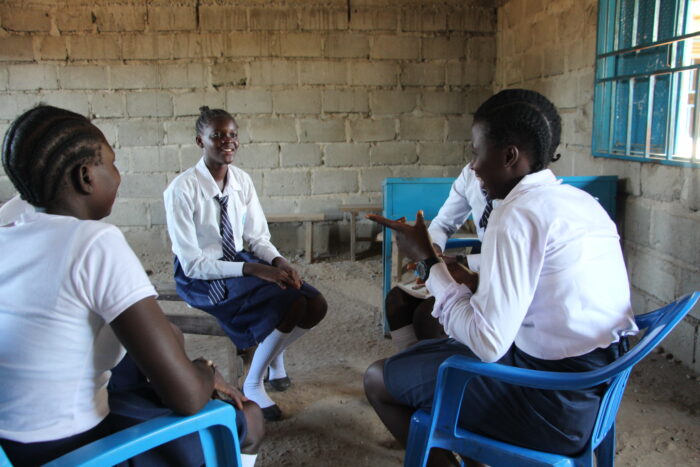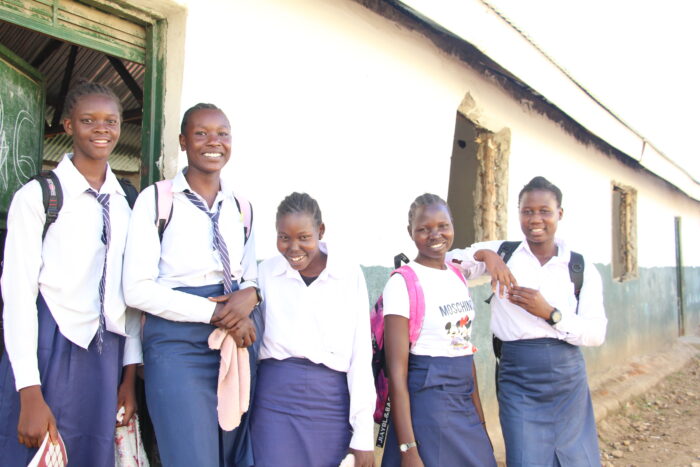Sign Languages Unite Us!
September 23, 2022 10:09 am
“When Hawa reported to the school, we felt she was different, but after attending some lessons together, we realised she was just like us. We became friends. Now we interact well with her,” Sarah, a learner in Juba.
Today is the International Day of Sign Languages. Girls’ Education South Sudan (GESS) joins the rest of the world to celebrate this day under the theme, “Sign Language Unites Us”. This day is celebrated annually on the 23rd of September to increase awareness of the existence of sign languages and their importance.
Globally, there are over 300 sign languages, and over 70 million deaf people. More than 80% of these people live in developing countries (International Day of Sign Languages | United Nations). In South Sudan, there is still no comprehensive data on the number of people with hearing impairments, but we know that at least 3,641 children who are enrolled in school have some form of hearing loss. Of these, 373 are deaf and would benefit from sign language in school. We can assume that many more are out of school or have not yet been identified.
In most cases, during government events or official communications, there is no interpreter for sign language because sign language has not been embraced fully and there is a lack of sign language interpreters. Even in schools, sign language is not widely used due to the lack of teachers.
Midset Primary and Secondary School in Juba is going above and beyond to include learners with hearing impairments, teaching sign language to both teachers and learners.

Midset currently has several learners with disabilities registered, including three children with hearing impairments, two of whom use sign language. “In this school, we have several learners with disabilities, and they feel welcomed. We have two learners in Senior 2 with hearing problems.,” Mr Augustine, Head Teacher at Midset Primary and Secondary School.
Hawa is a learner with some degree of hearing and speech. Hawa states that she chooses to take the front desk in the class so that she can read the lips of the teacher to help her understand better, which can be quite challenging for her. Hawa is currently learning sign language alongside some teachers and learners to ease their interaction and her learning. With some difficulty, she explains, “When I joined this school, I sat in the front row. When the teacher is talking, I have to look at him and be very attentive so that I can understand better”.
Learners with disabilities at Midset School feel welcomed and comfortable studying together with those without disabilities. “I have friends at the school, I don’t feel discriminated against because I interact with the learners well. When they don’t understand what I am communicating to them, they ask me again in a good way. Also, the teachers are good. If I don’t understand them, I go to them after they complete the lessons to ask them questions and they help me,” Hawa.
 Hawa (with pink bag), and her classmates
Hawa (with pink bag), and her classmates
Like Hawa, all children including children with all forms of disabilities have the right to education, and they should enrol in mainstream schools of their choice.
Today, we call upon all stakeholders to recognise the importance of sign languages and to embrace the learning and use them so that we ensure that those with disabilities are included at all levels.
South Sudan Sign Language has been fully developed and is being promoted by the government across the country in an initiative led by the Ministry of Gender, Child and Social Welfare and the South Sudan Association of the Deaf.
Girls’ Education South Sudan (GESS) continues to champion disability inclusion across all of its activities. To find out more, go to our website: Disability Inclusion : Girls’ Education South Sudan (girlseducationsouthsudan.org)
Categorised in: Disability Inclusion, Human Interest Story
Comments are closed here.